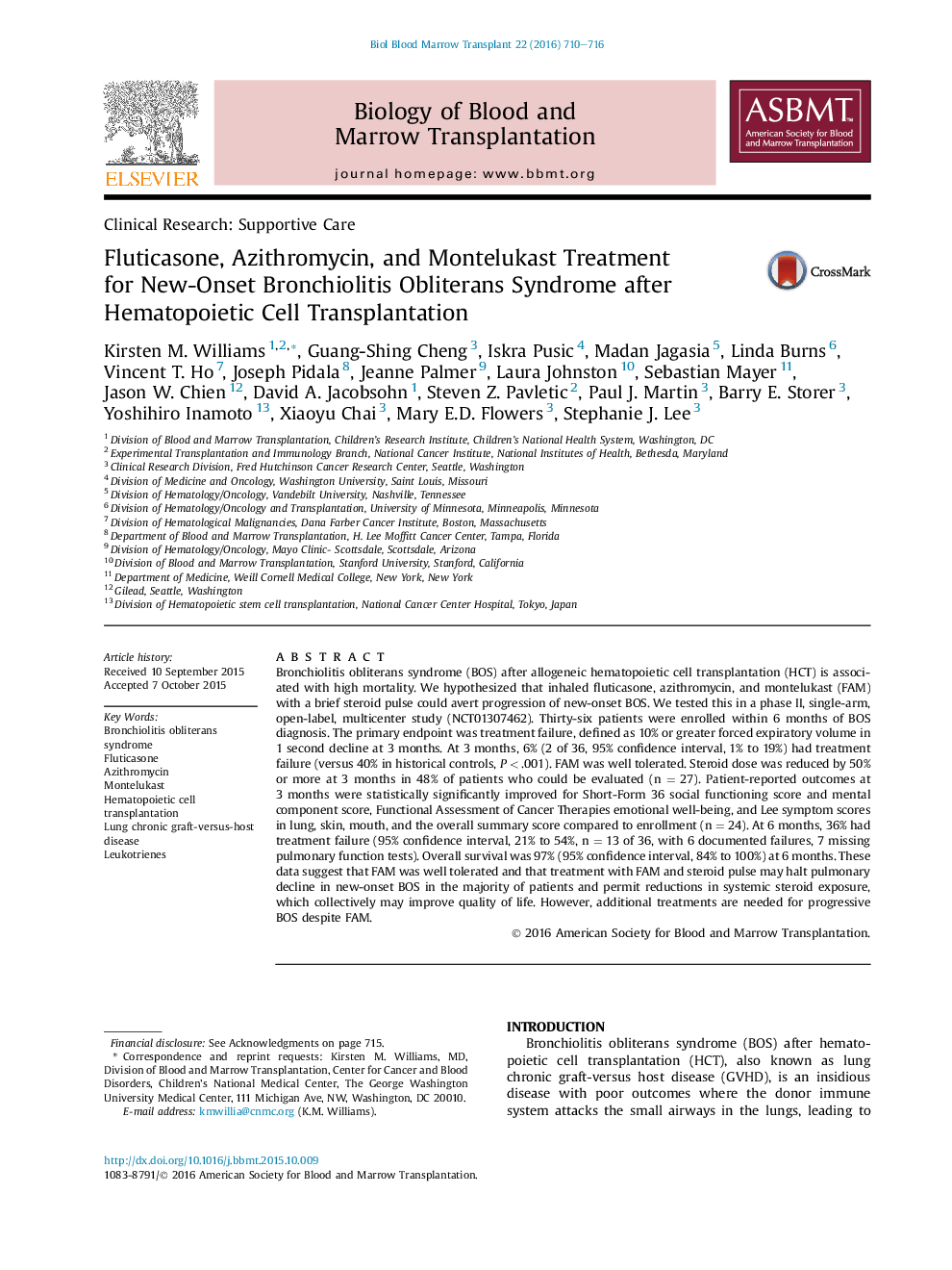| Article ID | Journal | Published Year | Pages | File Type |
|---|---|---|---|---|
| 2101352 | Biology of Blood and Marrow Transplantation | 2016 | 7 Pages |
•Bronchiolitis obliterans syndrome after hematopoietic cell transplantation is a rare complication with high morbidity and mortality•This is a single-arm, multicenter phase II study of 36 patients with newly diagnosed bronchiolitis obliterans syndrome treated with fluticasone propionate, azithromycin, and montelukast•Fluticasone propionate, azithromycin, and montelukast was well tolerated•Fluticasone propionate, azithromycin, and montelukast with steroid pulse is associated with stable lung function and improved functional and patient-reported outcomes for most newly diagnosed patients with bronchiolitis obliterans syndrome
Bronchiolitis obliterans syndrome (BOS) after allogeneic hematopoietic cell transplantation (HCT) is associated with high mortality. We hypothesized that inhaled fluticasone, azithromycin, and montelukast (FAM) with a brief steroid pulse could avert progression of new-onset BOS. We tested this in a phase II, single-arm, open-label, multicenter study (NCT01307462). Thirty-six patients were enrolled within 6 months of BOS diagnosis. The primary endpoint was treatment failure, defined as 10% or greater forced expiratory volume in 1 second decline at 3 months. At 3 months, 6% (2 of 36, 95% confidence interval, 1% to 19%) had treatment failure (versus 40% in historical controls, P < .001). FAM was well tolerated. Steroid dose was reduced by 50% or more at 3 months in 48% of patients who could be evaluated (n = 27). Patient-reported outcomes at 3 months were statistically significantly improved for Short-Form 36 social functioning score and mental component score, Functional Assessment of Cancer Therapies emotional well-being, and Lee symptom scores in lung, skin, mouth, and the overall summary score compared to enrollment (n = 24). At 6 months, 36% had treatment failure (95% confidence interval, 21% to 54%, n = 13 of 36, with 6 documented failures, 7 missing pulmonary function tests). Overall survival was 97% (95% confidence interval, 84% to 100%) at 6 months. These data suggest that FAM was well tolerated and that treatment with FAM and steroid pulse may halt pulmonary decline in new-onset BOS in the majority of patients and permit reductions in systemic steroid exposure, which collectively may improve quality of life. However, additional treatments are needed for progressive BOS despite FAM.
